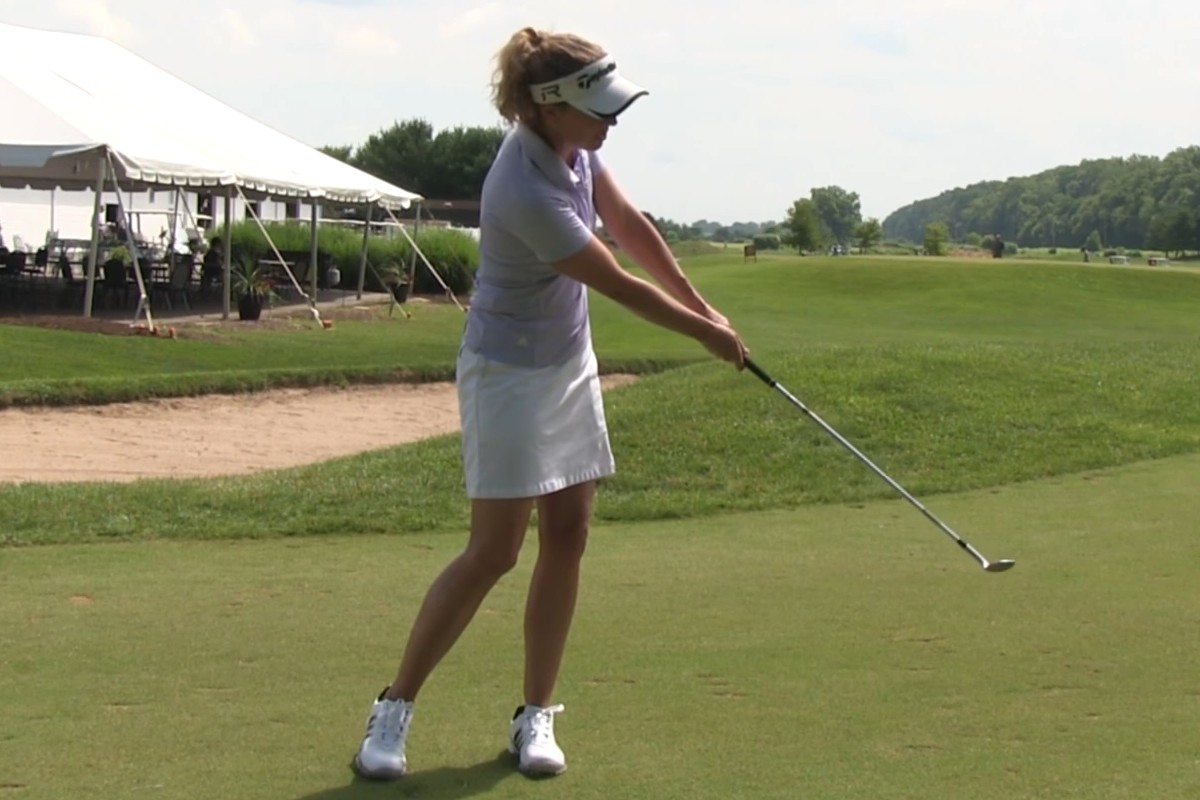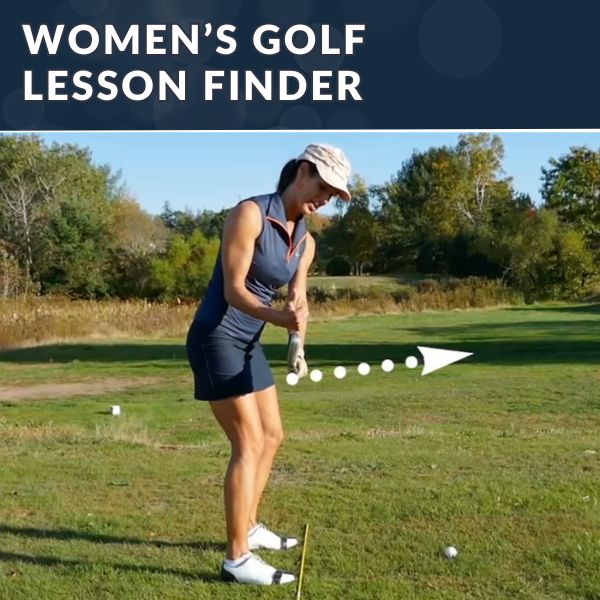The ability to control delicate shots around and into the green is the mark of a great player. The good news is you don’t have to be super strong or overly athletic to learn how to chip and pitch consistently, you just have to make good contact with the ball and control the distance.
I get as many students that are making good contact, but can’t control how far they fly these shots as I do those that have good distance control but have frequent bouts of inconsistency with their contact. To lower your scores and save shots around the green you need to have both crisp contact and control over the distance the ball flies.
MAKING GOOD CONTACT
Making good contact with the ball means you will be able to both get spin on the ball (get it to check up on the greens) and control how far it flies. If you are hitting behind the ball or catching it thin, you are not making clean contact between the clubface and the ball. That makes it impossible to allow the grooves on the face to work with the dimples on the ball to create friction and spin. To make sure you are catching the ball cleanly and more consistently in the center of the face:
Lean Left
Leaning to the left (or target side) with your weight and your sternum allows you to hit down on the ball with a descending blow. When your weight or sternum get behind the ball you will swing upward. The result is either bottoming out behind the ball (hitting it fat) or catching the top of the ball (hitting it thin). Either way, it is difficult to spin the ball and control how far it goes with poor contact. Be sure to have 60-80% of your weight on your target side foot and keep your hands accelerating through the shot.
Play the Ball in the Middle – Ball position certainly can change depending on how high you want to fly the ball. Remember – “Left Means Loft”. Moving it around too much leads to a lot of inconsistency for the average player. In most cases, there is nothing wrong with playing it in the middle of your stance and setting up with a square stance. You are much more likely to hit it in the center of the face with everything neutral than if you are tinkering and adjusting things too much.
Steps to Controlling Your Distance
Controlling distance means you will be able to predict how far the ball flies. It is the carry distance that we need to know first and foremost. Green and course conditions change from course to course and day to day, so the roll out will always be different. Roll out will also change depending on the club you use. To control how far your ball flies in the air follow these two guidelines:
Control Backswing Length
The length that you swing the club back is a huge determining factor in how far the ball will fly. Obviously, for shorter shots, you need a shorter swing and for longer pitches, you will need a longer backswing. Try to match the follow through with the backswing for a smooth and consistent flow. It will take a lot of time and repetitions practicing stopping at certain points in the backswing and charting how far your ball flies, but it will pay off tenfold in your scores. Try at first breaking the swing down in quarters and giving yourself 4 different backswings to work with. 1/4 of a swing would be where the shaft reaches parallel to the ground on the takeaway. 1/2 of a swing would be where your left (or target side) arm reaches parallel to the ground. A 3/4 swing would be where your hands reach about chest high. Then, of course, a full swing is when you’ve completed your shoulder turn and allowed your hands to travel high to the top of the swing.
Control Acceleration
With pitching and chipping you need to feel that your body parts move more in sync and at the same rate of rotation. In a full swing, we have our hips reversing directions and firing first to create lag in the downswing. In these short shots though you need to feel more that everything is moving together and that no body part is outracing another. The faster you rotate through, the farther the ball will fly. You need to take time hitting shots with various rates of rotation through the ball to see how far your ball goes when you swing at say 20 mph vs. 50 mph.
Follow these tips for better contact and better distance control and you are on your way to a better short game. Now that you have a system, putting in a little more practice on this part of your game can go a long way to better scores.
Maria





















